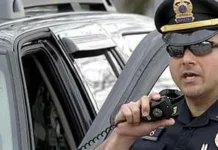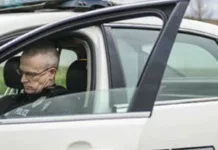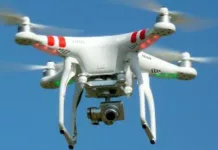In today’s technologically savvy age of the smartphone, almost anyone can record and share live video footage of events in real-time. The question of on-duty police officers using body-mounted cameras to capture incidents as they unfold continues to be the subject of intense debate. Using police body cameras is still in the initial stages of evaluation and study. However, the equipment is quickly becoming standard in police departments across the United States.
A growing number of state and county legislative departments across the United States have debated the pros and cons of using police body cameras and whether they should become part of the standard law enforcement officer’s uniform.
As an example, a police department in Rialto, California, has been wearing body-mounted cameras for several years now. The equipment can record everything that happens between cops and citizens. During the first year of use, the use of force by police officers reportedly declined by 60%, and complaints from citizens against law enforcement officers decreased by 88%.
Here is a closer look at the positives and negatives of on-duty police officers wearing cameras to record interactions during their daily line of work.
Overview of Police Body Cameras
The cameras are tiny portable devices easily mounted on sunglasses, clipped to hats or helmets, or attached to uniform collars or lapels. The recording device’s base is wired, attached to the officer’s uniform, and concealed in a pocket.
Officers must wear the cams throughout their shifts. The batteries last for approximately 12 ½ hours. The devices can record high-quality video, even in situations with low light or complete darkness, such as in interior spaces or at night.
Benefits of Police Body Cameras
Following is a list of the advantages for both cops and citizens:
- Recording interactions with residents is likely to minimize complaints about police officer behavior and the unnecessary use of force Because there is a record of their interactions for everyone to see. Both officers and citizens may tend to be more restrained, knowing that the camera captures their words and actions.
- Using the cam while on duty provides hard video evidence of decisions made by officers in high-intensity situations. The footage is extremely valuable in piecing together what happened.
- Video recorded by body cams helps protect police officers and citizens against false accusations, misconduct claims, or abuse.
- Increases transparency and accountability of officers.
- It may help prevent and de-escalate confrontational situations between officers and civilians.
- It may help provide valuable evidence in obtaining accurate witness and victim statements.
- Video footage may help speed up court proceedings by providing indisputable proof of situations. This may lead to a reduction in court expenses. For example, it may help increase pre-trial plea bargains or conviction rates.
Pros and Cons, Concerns About Use
Following is a partial list of the cons, disadvantages, concerns, and arguments against using body cameras:
- According to early versions of policies governing their use, law enforcement officers must physically activate the device when they exit their patrol car. The recording equipment must be activated when interacting with civilians or recording statements during investigations. However, officers decide when to activate the camera and for how long to store the footage. Also, they decide if and when it should be made accessible to the public. For example, the camera can be deactivated when interviewing a victim of sexual assault to maintain the victim’s privacy.
- Privacy issues are of concern for both cops and civilians. How to deal with those concerns is a subject of ongoing discussion.
- Another negative is that body cameras may prevent people from coming forward as credible witnesses to help assist with investigations. This is due to fear of retaliation or fear of public exposure.
- Another con is that technical issues related to the equipment may sometimes prevent proper functioning. This could be due to a dead battery, damaged components, obstructed lens, and other problems. This could result in personnel missing important witness statements or crucial behavior by officers or citizens.
- The equipment is expensive. Potential costs in their use include the cost of the device, ongoing maintenance, and the cost of storing and maintaining the video footage and recorded data collected. Storage costs and decisions about who should have access are some of the most hotly debated issues. In addition, it costs money to catalog and retrieve footage in response to subpoenas, investigations, and public information requests.
After looking at both the advantages and disadvantages, it is apparent that the pros of using the devices outweigh the cons. Given the recent officer-involved shootings and brutality in Ferguson, Missouri, South Carolina, Florida, Baltimore, and Maryland, we will likely see departments continue to adopt their use. The issue of whether police officers should wear body cameras is the subject of ongoing debate. Discussion by public officials, city governments, and even members of Congress continues.
Equipment Cost
On a per-device basis, costs range from a low end of about $100 for basic models to a high of around $1000 per unit. The difference in overall cost depends on features, options, quality, and manufacturer.
However, the total cost may be as much as $1,200 per unit when additional maintenance, data storage, and retrieval costs are considered. We expect these costs to decrease considerably over the next few years as the technology improves and new suppliers enter the market. The emergence of new suppliers will also bring forth new features, such as live-streaming cams.
Where to Buy the Equipment (examples only, not an official or complete list)
If you need to buy equipment, there are several manufacturers and distributors. Following is a sample list of providers:
Amazon.com – Amazon.com offers an extensive collection of body cams and is probably the most accessible place to buy from. However, they are not an official supplier to police departments. Check out Amazon’s selection. Prices range from $100 to $400.
CopsPlus.com – CopsPlus.com offers the PFB1000 1080p Prima Facie 32 GB Body Camera. This unit clips directly onto the officer’s uniform, allowing them to record footage in high-definition. This device offers 32MB of memory storage. When we last checked, these ran about $730 per unit.
Home Security Superstore – The Home Security Superstore sells a law enforcement-grade tactical night vision camera for $199.00. This unit includes a DVR that captures video in 1080p and saves it to a 32GB memory card. The device captures video up to 24 feet away, and a high-fidelity mic captures audio. The battery allows up to eight hours of continuous recording.
L3 Mobile Vision, Inc. – L3 provides a body-worn product called BodyVision. Their product allows officers to easily and quickly download data and captured video, manage devices, and search by case. They offer software and cloud-based options. This solution provides five hours of high-definition recording capability and a 72° field of view. Search captured clips by date, car, officer, and more. The company also has several other excellent solutions. For example, systems for cars and motorcycles, tablets, license plate recognition tools, and digital evidence management solutions.
OfficerStore.com – The Office Store offers an extensive library of products for law enforcement. They have a wide selection of body-worn cameras and all necessary accessories. Plus, they have batteries, chargers, protective lenses, cables, docking stations, mounting equipment, software, and more.
TASER® International Inc. – TASER is one of the largest video equipment providers and stun guns to law enforcement divisions in America. They provide a wide range of video devices from $400 to $700 each.
Typical Features
Following are some of the features you’ll find on the most popular police body cameras:
- Audio Quality – The system should be able to capture conversational speech at a distance of three feet.
- Cables – for connecting to charge and computer or tablet for viewing recorded video
- Chargers – Used to recharge the batteries.
- Compression / Encoding – Modern models use H.265 or MPEG-4 encoding/compression. H.265 is the new standard with better compression. The improved compression means smaller file sizes and less storage. However, it still maintains high image quality.
- Docking station – Used to dock and charge multiple sets
- Microphone – A two-way microphone captures clear audio to ensure voices and records other sounds.
- Mounting equipment – Used to mount the equipment on the officer’s uniform or other location, such as clips or car mount tools.
- Night Vision – While not true infrared, many cams have infrared illumination capability. Therefore, they can automatically adjust for low light or night situations.
- Protective Lenses – These protect the lenses from physical damage, flying debris, and weather.
- Rechargeable Battery – Batteries can be recharged. Conveniently, this eliminates the need for constant changing of batteries.
- Recording Format – Video and audio content should be exported in a standard, non-proprietary format. This is so that it can be played using widely available software. Also, avoid models that output footage that can only play on vendor-specific software.
- Resolution Settings – Various resolution settings allow low- or high-definition recording, such as 480, 720, or 1080. Storage requirements increase as the resolution increases.
- Start and Stop – Touch-and-go recording capabilities allow officers to start and stop the cameras quickly. Eliminating any complicated procedures or steps to follow.
- Storage Capability – Memory storage capacity varies depending on the model, similar to that of a video camera. Storage capability can be part of the device or on removable memory cards.
- Waterproof – Prevents damage in damp conditions and rain.
- Wide field of vision – Varies by equipment, usually up to a 120-degree field of view.
Related: Read how cops use Police Drones to conduct aerial surveillance and photography.
Questions and Comments
If you have any questions or comments about police body cams, please post a comment below.














body cameras may prevent people from coming forward as witnesses to help investigations due to fear could you provide more information on that.
Witnesses have to be protected at all costs. That also includes identity protection. The footage is released to the public when it is approved and they may cover the faces of the witnesses.